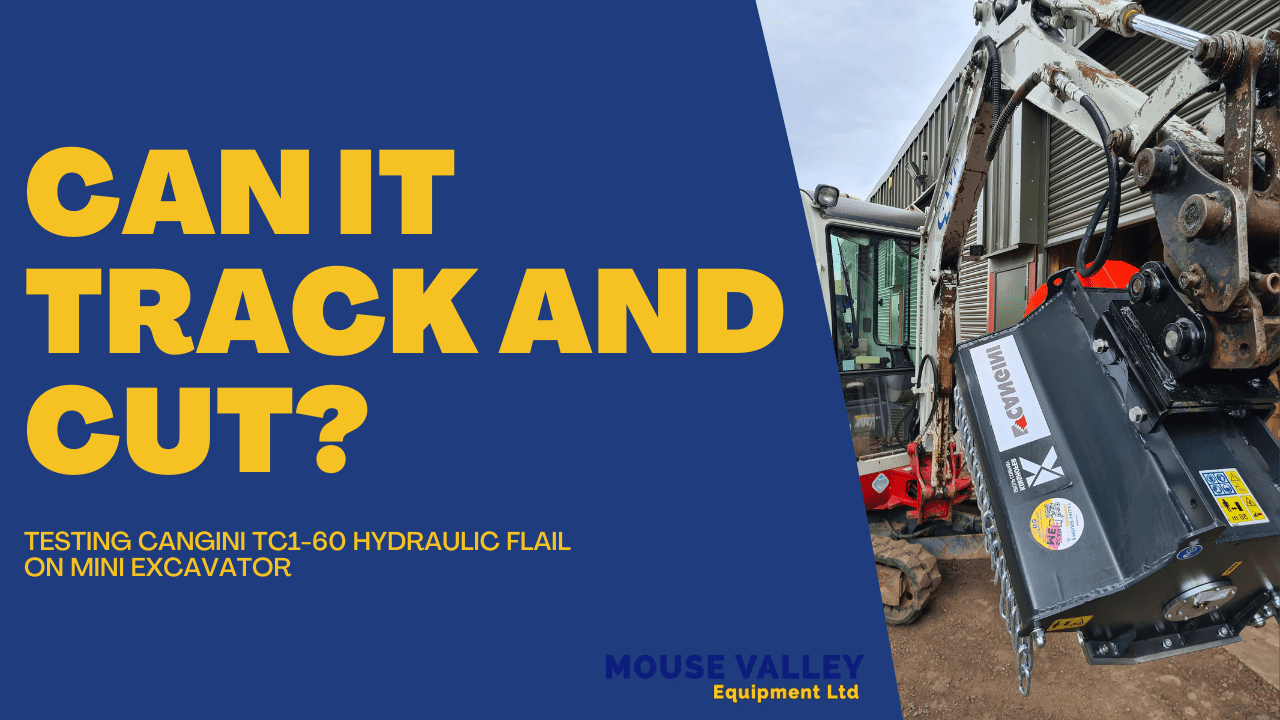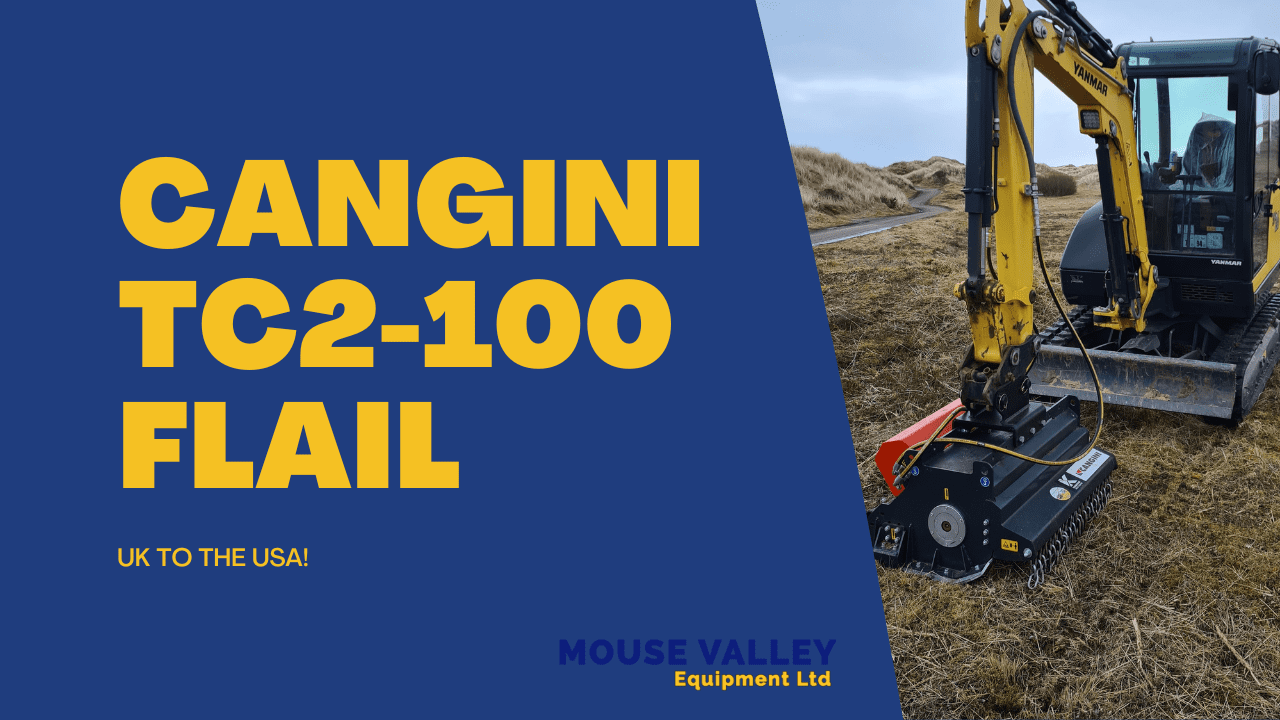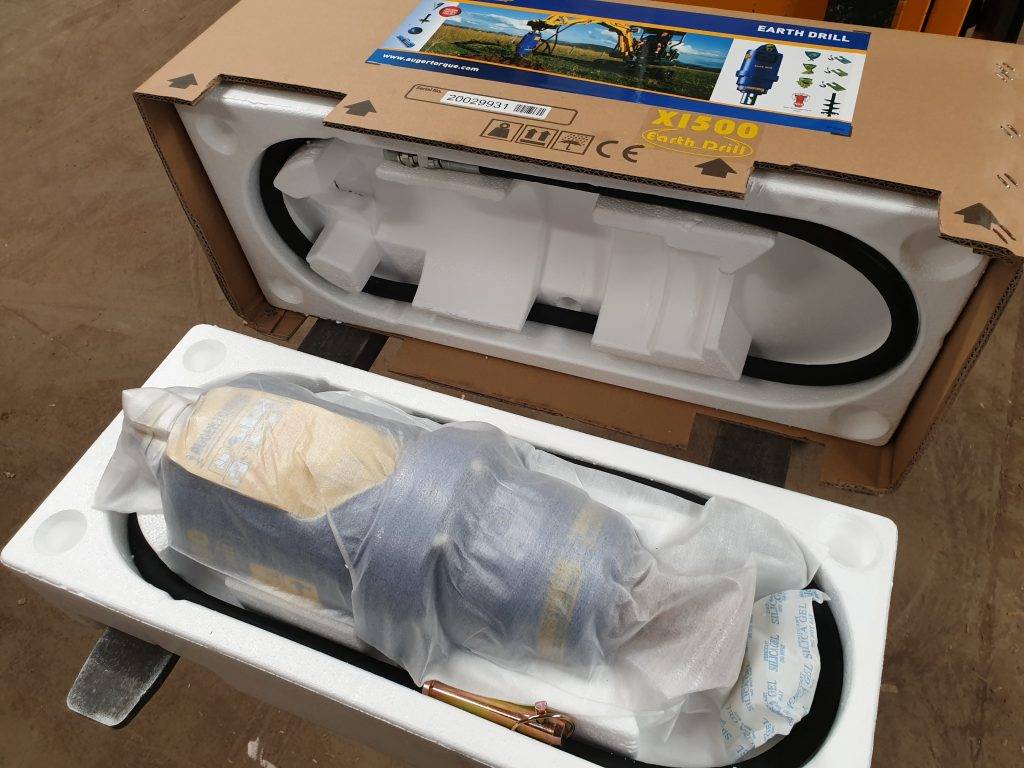
Track and Cut at Once? Putting the Cangini TC1-60 to the Ultimate Test
Introduction
We often hear from our customers asking, “Can a flail on a mini excavator track and cut at the same time?” We’ve wondered the same thing. So, we decided to get to the bottom of this query and put the question to a practical test with one of the flails we sell, the Cangini TC1-60.
About the Cangini TC1-60
The Cangini TC1-60 is an excavator-mounted hydraulic flail with a 60cm cut width swinging hammer drum. Known for its robust construction and efficient performance, this flail has been a favourite among those who demand precision and power in their ground maintenance tasks.
The Experiment
Armed with a Takeuchi TB219 mini excavator and a Cangini TC1-60, I set out to find whether this formidable machine can indeed track and cut simultaneously.
Test Day
Full disclosure: We went into the test blind, with no idea what the outcome would be. It was an exciting opportunity to see how the flail would perform under such circumstances. As William stated, the ultimate goal was to find out if the flail drum’s speed would decrease while tracking and whether it could balance out.
The Outcome
After a rigorous session of hedge trimming and tidying, it was clear that the Cangini flail on the Takeuchi could indeed track and cut at the same time! The result exceeded our expectations and answered the lingering question definitively.
Observations
While the flail did the job splendidly, I observed that the hitch bracket’s geometry needed adjustment for more comfortable operation, especially for vertical flailing. This minor hitch is easily addressed, improving the user experience immensely.
Versatility of the Cangini TC1-60
The experiment showed that while the hydraulic flail is not necessarily the first choice for hedgerows, its ability to cut and track simultaneously makes it a valuable tool for diverse ground maintenance tasks. Plus, with the correct depth of field and a bit of practice, operating the flail becomes an effortless task.
Final Thoughts
If there’s one thing we’ve learned from this experiment, it’s that a hydraulic flail, like our Cangini TC1-60, can indeed track and cut simultaneously. The test results were impressive, proving the Cangini’s prowess and versatility.
Learn More
For more insights and an in-depth look at the experiment, check out our video here. We love hearing from our readers and viewers, so please leave a comment or question below or on the video. We’re always eager to engage and answer your queries.
At Mouse Valley Equipment, we’re committed to providing top-notch equipment and insightful knowledge to all our customers. Stay tuned for more tests, reviews, and equipment showcases!
Contact Us
For more information on the Cangini TC1-60 and other excavator flails, click here. If you have any more questions you want us to try out or any other ideas for videos or blog posts, leave us a comment below or contact us directly. We’re here to help!


